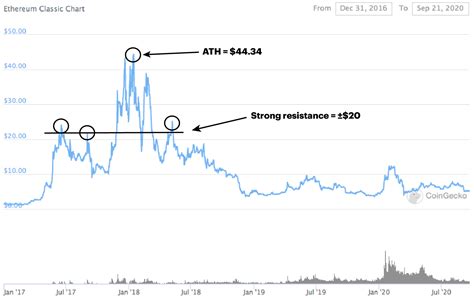Evolution of cryptocurrency: a look in Ethereum Classic (etc)
In the world of cryptocurrencies, a name is noted for its historical resistance and significance: Ethereum Classic (etc.). As a pioneering project within the Ethereum network, etc., he played a vital role in outlining the Blockchain landscape. In this article, we will deepen in the history and current state of the etc., exploring its unique characteristics and contributions to the cryptocurrency space.
Genesis etc
Ethereum Classic was born from the update of the Ethereum 2.0 consensus algorithm (ETH 2.0) in August 2021. This upgrade aimed to introduce a faster, more energy-efficient version and more scalable of the Ethereum network. While the main Ethereum 2.0 upgrade has focused on improving scalability, some developers have chosen to create etc. as an alternative.
Etc uses the same basic technology and a smart contract platform as Ethereum, but with some key differences that differentiate it from its competitor. One of the main advantages of, etc. is its ability to use the proof of stakes consensus (POS), which reduces energy consumption and makes it more environmentally friendly.
History etc
The journey etc started in 2014, when the project was first introduced as an Ethereum fork. The initial purpose was to create an alternative to the main Ethereum network, with the intention of providing a more decentralized and lighter solution. Over time, etc. It has gained popularity among Ethereum developers and users looking for a more energy efficient alternative.
During its development, etc. It was confronted with several challenges, including problems of scalability and increased competition from other projects. Despite these obstacles, etc. It remains employed in its initial vision of providing a sturdy and safe blockchain platform for decentralized applications (DAPPS).
Role in Blockchain History
The influence of the blockchain space cannot be overvalued. As one of the first cryptocurrencies to use the POS consensus, etc. has played a significant role in outlining the modern blockchain landscape.
The introduction of, etc. marked a turning point in the development of DAPPS, because it offered a more energy and more scalable alternative to the main Ethereum. This change has opened the way for other projects such as Tezos (XTZ) and Cosmos (atom), which also used the POS consensus and focused on improving scalability.
Key differences from Ethereum
The unique characteristics of the etc. differentiate it from his competitor, Ethereum. Some of the key differences include:
* The consensus algorithm : etc uses the proof of the stake (POS), while Ethereum uses the evidence of work (POW).
* Energy consumption

: etc is designed to be more energy efficient than Ethereum, which makes it a more environmentally friendly option.
* Scalability : While Ethereum 2.0 aims to improve scalability, etc., the consensus model allows faster transaction processing times.
Conclusion
Ethereum Classic (etc) has traveled a long road since its establishment in 2014. As one of the pioneering projects in the Ethereum network, etc. it has played a vital role in outlining the Blockchain landscape. Its unique characteristics, including the proof of the stake consensus and the energy efficient design, differentiate it from other cryptocurrencies.
As we look at the future, etc. It remains employed in its initial vision of providing a sturdy and safe blockchain platform for decentralized applications (DAPPS). Whether you are an Ethereum developer or simply interested in finding more about cryptocurrency, etc. It is definitely worth exploring.

